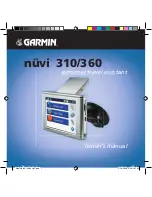
To change the initial date...
·
Use the right or left arrow key to position the cursor over the date field.
·
Press the number keys associated with the UTC day of the month. For
example, to enter the 14th day of June, press the 1 key followed by the
4 key. Remember to press the CLR key if you make a mistake.
·
Use the alphanumeric keys to enter the first 3 characters of the UTC
month, i.e. JAN, FEB, MAR, APR, MAY, JUN, JUL, AUG, SEP, OCT,
NOV, or DEC.
·
Enter the last two digits of the UTC year. For example, in the year 1991
you would enter “91”. In the year 2005 you would enter “05”.
·
Press the ENT key when you have finished entering the UTC date.
To change the initial time...
·
Use the right or left arrow key to position the cursor over the UTC time
field.
·
Enter the time in 24 hour UTC format. For example, if the UTC time
is 14:30 (i.e. 2:30 PM), press the 1, 4, 3, and 0 keys.
·
Press the ENT key when you have finished entering the UTC time.
The position on the Initialization Page is the last position stored in the GPS
100. This page also displays the bearing and range from the airport nearest
the displayed position, which typically will be the destination of your last trip.
You may verify the initial position by comparing the displayed latitude/
longitude with your actual position (obtained from a map or chart). Alterna-
tively, you may find it easier to verify that the initial position is within a
reasonable distance from the displayed airpoint. Unless your unit has been
moved more than 800 nautical miles with the power off, you should not have
to change the initial position. (For fast satellite acquisition, the displayed
position should be within 60 nautical miles from your actual position.)
3-2















































